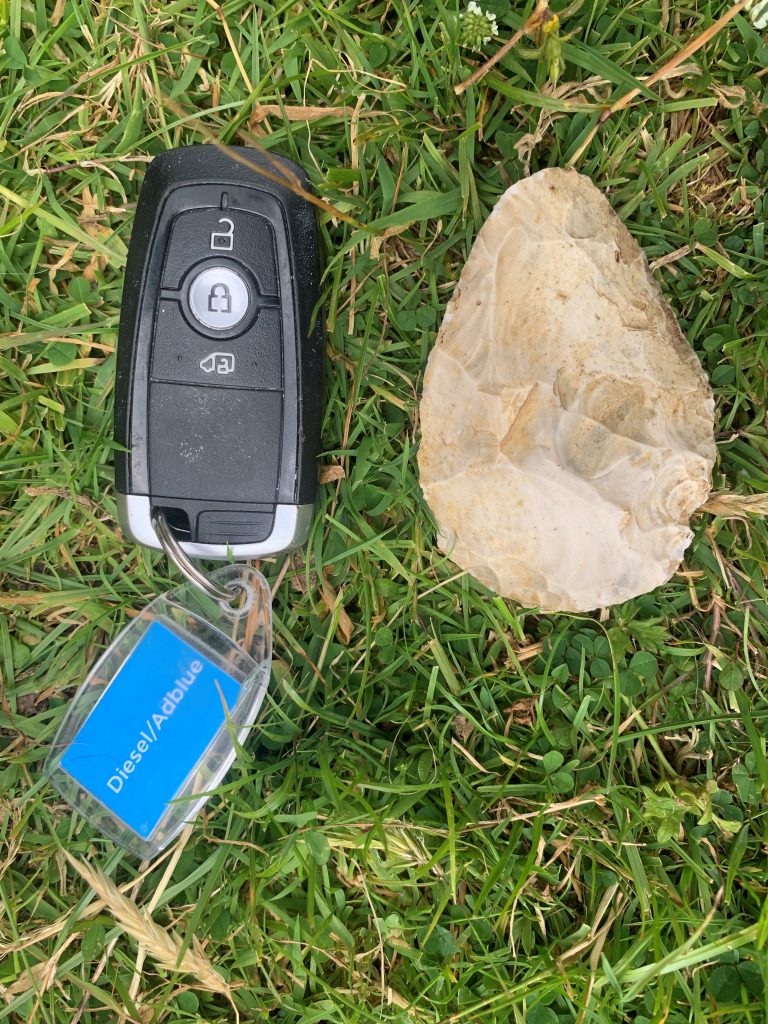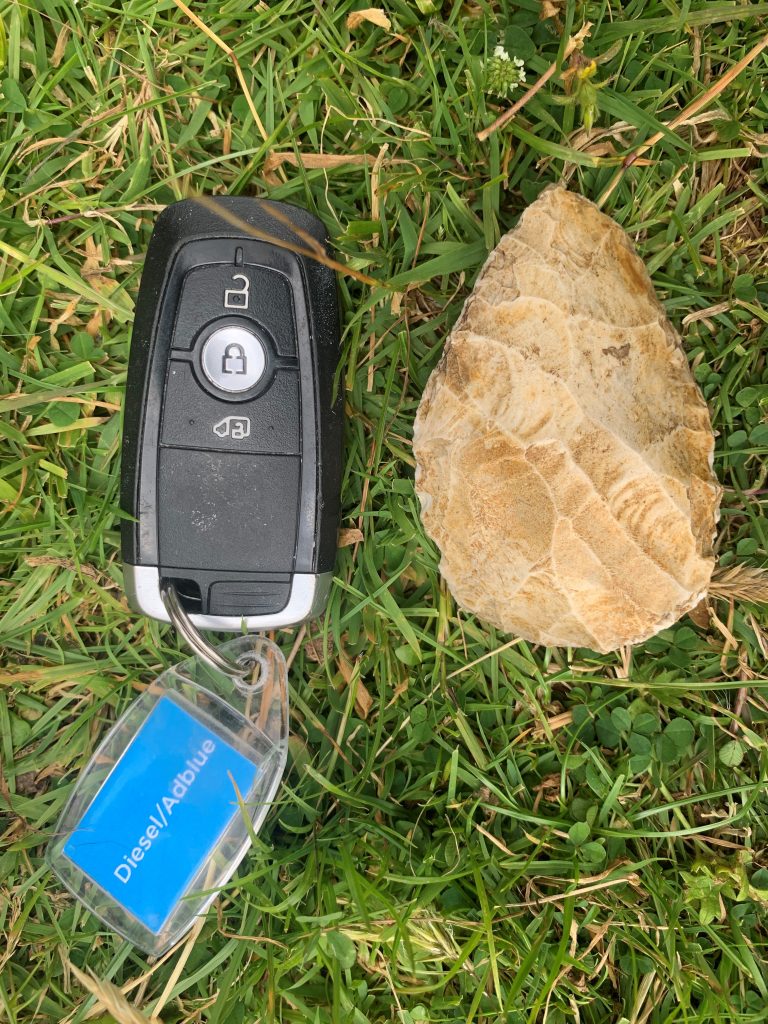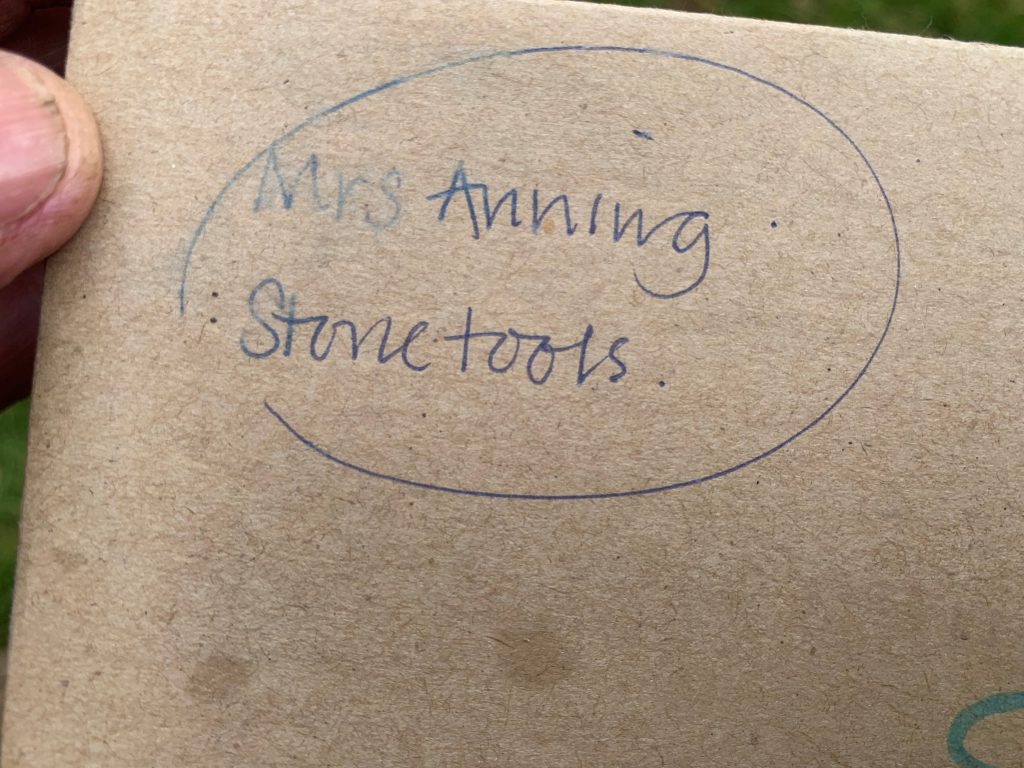We were away on fieldwork in Herefordshire over July and I am very slowly catching up with things. One of those things is Mrs Anning’s twisted cordate handaxe. Ian Elliott has worked on our sites over a number of seasons, and this year he brought some lithics for me to have a look at, in particular two fantastic handaxes, one of which I will discuss in this post.
As you can see from the video this handaxe is what is termed a twisted cordate. Twisted because the cutting edge undulates around the tool, cordate because it is heart shaped. It bears a striking resemblance to my favourite handaxe within our teaching collection, a 3D model of which can be seen here: https://skfb.ly/ooCKM.

As can be seen with these two photographs, the patina, or colour on one face is different to that on the other. This indicates that it has been sat for a considerable length of time and the lower surface has patinated at a different rate to the exposed upper surface. The edges are in good condition and indicate that it has not been rolled around much if at all. Like the one we have, it is in very good condition. White, Ashton and Bridgland (2019 open access) looked at the recorded contexts of this particular type of handaxe in Britain and dated them to around Marine Isotope Stage 11, so around 400,000 years ago.

The handaxe(s) were donated to Ian’s local primary school, St Mary’s in Dilwyn, Herefordshire by a Mrs Anning. They asked Ian to give a talk about our site, he told them we had very few finds and in response they showed him their donated stone tools. I am both really keen to find out from Mrs Anning where she got the handaxes from, I think Ian is on the case there. I am now keen to make one of these twisted handaxes.

White, Ashton and Bridgland explain the technological process and it sounds complicated, so I am really interested to see if the actual systematic reduction process is as complicated as the descriptions. Watch this space!
References: White M, Ashton N, Bridgland D. Twisted Handaxes in Middle Pleistocene Britain and their Implications for Regional-scale Cultural Variation and the Deep History of Acheulean Hominin Groups. Proceedings of the Prehistoric Society. 2019;85:61-81. doi:10.1017/ppr.2019.1
Leave a Reply